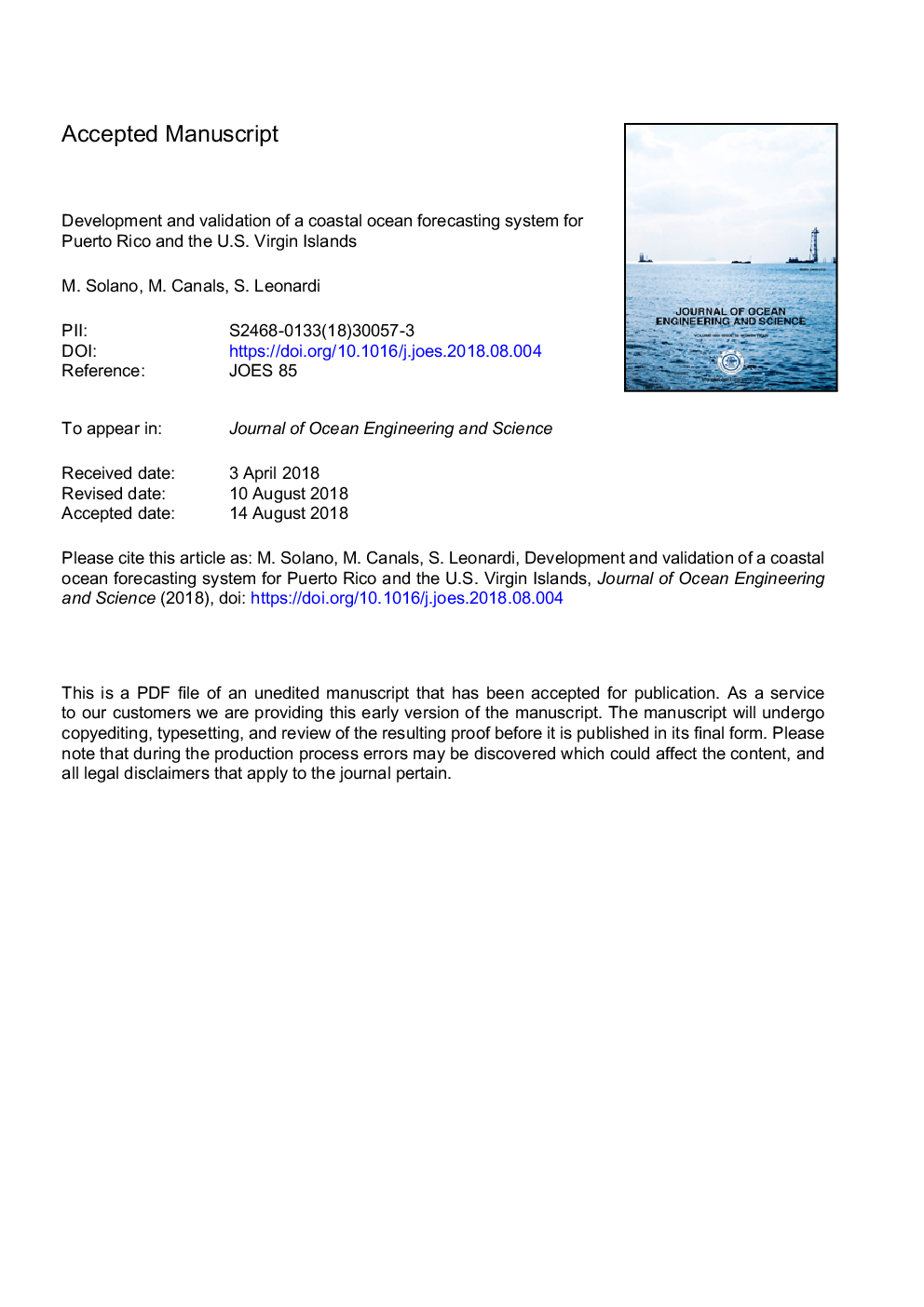| Article ID | Journal | Published Year | Pages | File Type |
|---|---|---|---|---|
| 10153030 | Journal of Ocean Engineering and Science | 2018 | 21 Pages |
Abstract
An ocean forecasting system has been developed for the coastal area of Puerto Rico and the U.S. Virgin Islands. This paper presents the development and validation of the Puerto Rico Operational Regional Ocean Modeling System (PRO-ROMS) developed by the Caribbean Coastal Ocean Observing System (CARICOOS), which aims at improving currently available short-term forecasts of ocean currents for this region, and to resolve sub-mesoscale variability absent from the currently operational regional systems. The coastal ocean forecasting system is based on the Regional Ocean Modeling System (ROMS), and provides a 3-day forecast of ocean currents, water levels, temperature and salinity. Initial and lateral boundary conditions are derived from the U.S. Naval Oceanographic Office (NAVOCEANO) operational AmSeas forecasting system, a 3.6-km resolution application of the regional Navy Coastal Ocean Model (NCOM) that encompasses the Gulf of Mexico and Caribbean Sea. Meteorological conditions are interpolated from the Navy's Coupled Ocean-Atmosphere Mesoscale Prediction System (COAMPS) with the exception of surface stresses, which are computed from a 2-km application of the Weather Research and Forecasting (WRF) model used by National Centers for Environmental Protection's (NCEP) National Digital Forecast Database (NDFD). Tidal variability is imposed using ROMS spectral forcing by specifying the harmonic phases and amplitudes from the TPXO global inverse tide solutions at the boundaries and sub-tidal conditions are imposed by filtering out high frequencies of barotropic variables from the lateral boundary conditions interpolated from AmSeas. Modeled results of sea surface height are validated with NOAA tide gauges, ocean currents are validated with Acoustic Doppler Current Profilers (ADCP) and High Frequency Radars (HFR). Computed statistics show improvement of the ocean current forecast in PRO-ROMS compared to AmSeas, especially at higher frequencies dominated by the tides and in small channels where the bathymetry is better represented by the higher resolution coastal ocean forecasting system.
Related Topics
Physical Sciences and Engineering
Engineering
Engineering (General)
Authors
M. Solano, M. Canals, S. Leonardi,
